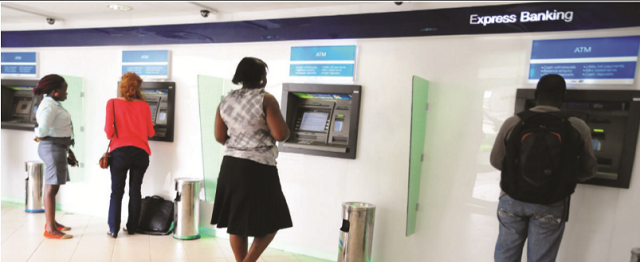
World Bank describes impact on business growth, spending, saving culture.
The banking segment is the most visible face of Uganda’s financial sector. So could the bad name it currently carries be hurting individuals and the economy generally? The World Bank Manager in Kampala, Christina Malmberg Calvo, thinks so and she has the latest report from the World Bank to back her views.
Calvo and the World Bank argue that confidence in Uganda’s formal financial system remains unattractive to would be customers mainly because of high interest rates charged.
“Increasing access to low cost and safe financial products for firms will spur business investments and economic growth. Similarly, financial products targeted at the informal sector, rural households and women will create jobs and build resilience against shocks,” says Calvo.
No way, says, Emmanuel Tumusiime Mutebile, the governor of the Central Bank, whose docket includes ensuring a robust commercial banking sector. He disagrees, especially on the alleged low levels of public confidence in financial institutions.
Calvo, Mutebile, and other financial sector honchos were on Feb. 7 speaking during the launch of the latest World Bank economic update on Uganda titled “Step by step – Let’s solve the finance puzzle to accelerate growth and shared prosperity” in Kampala.
According to the economic update, close to 68% of adults in Uganda save but, only 16% save through formal channels such as banks, microfinance institutions, or SACCOs.
“This means that 51% of the adults keep their savings under the mattresses or in boxes within their stores or shops or anywhere else outside the financial system,” said Rachel Sebudde, the World Bank’s senior economist for Uganda and lead author of the report.
When it comes to firms, the situation is even direr, says the World Bank. Although 86.7% of firms in Uganda have a bank account against a sub-saharan Africa percentage of 88.1%, the percentage of firms with a bank loan/line of credit is 9.8% against 23.8% of firms in sub-Saharan Africa and 36.5% for other countries.
The World Bank says the high cost of finance and the strict collateral requirements stop business from borrowing to grow their operations.
Small and Medium Enterprises (SMEs) are the most cautious.
Uganda scores very badly on the World Economic Forum’s Global Competitiveness Report (2016-2017) when it comes to affordability of financial services. Only 17 of the 138 countries surveyed have higher costs of financial services.
The World Bank says there is a mismatch between the low return on savings and the high cost of borrowing.
People savings in banks get only 3-6% return on their savings but have to pay between 22—25% interest to borrow from banks.
The World Bank says household and business should be getting loans at lower rates and getting a higher return on their deposits. This would encourage more savings and household spending.
But Mutebile reeled off impressive figures that showed progress. He said commercial bank credit to the private sector had actually grown by more than three-fold at an average of 12% per annum over a period of 10 years (2005/6 to 2015/16). He also noted that deposits had grown strongly over this period by two-and-half times in real terms.
Mutebile said the Bank of Uganda continues to protect the interests of depositors, as has been evidenced by its recent winding up and transfer of assets and liabilities of troubled Crane Bank to dfcu.
The back and forth exchange between the captains of the finance sector poses a problem for ordinary citizens since both have a convincing set of facts to make their case.
Mutebile says that while he agrees that bank lending rates are too high and need to be reduced, the World Bank’s lumping of trouble on them is simply simplistic.
“The argument is premised on a rather optimistic view of the business sector and its borrowing capabilities.
“Formal sector credit-worthy businesses which are the main clients of commercial banks comprise of a small share of the economy,” he said.
Mutebile says the large pool of the informal business and micro enterprises that the World Bank is excited about lacks the capacity to utilize credit effectively.
“The ability of these kinds of businesses to make profit consistently and thereby service their loans is very precarious,” he said.
 The Independent Uganda: You get the Truth we Pay the Price
The Independent Uganda: You get the Truth we Pay the Price



